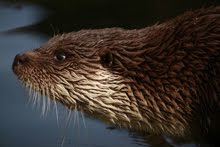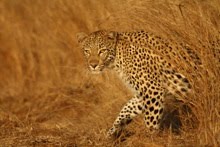The Alps are mountainous.
Walking here is not always easy.
and dragging a telescope and digiscoping setup with wherever I go is not always an option
(or at least not a preferred option ;-)
Particularly now in winter, I am finding very few good digiscoping moments and so I am tending to take advantage of the snowy winter wonderland that is Tirol to go walking, back-country snowshoe hiking, and skiing and most of the time my great big telescope (a beautiful Swaro ATS80) gets left at home.
But I invariably have a pair of binoculars with me when I go out hiking (well, you never know when you are going to come across a feeding/breeding flock of energetically brightly coloured crossbills). Then, if I do come across something interesting, I can always snap off a few photos through my binoculars.
Taking photos through binoculars (digibinning) can be a lot of fun, but is not always easy and I do a fair amount of digibinning with varying success. Sometimes the pictures are gems. Othertimes, not so much. The most important factors are:
Walking here is not always easy.
and dragging a telescope and digiscoping setup with wherever I go is not always an option
(or at least not a preferred option ;-)
Particularly now in winter, I am finding very few good digiscoping moments and so I am tending to take advantage of the snowy winter wonderland that is Tirol to go walking, back-country snowshoe hiking, and skiing and most of the time my great big telescope (a beautiful Swaro ATS80) gets left at home.
But I invariably have a pair of binoculars with me when I go out hiking (well, you never know when you are going to come across a feeding/breeding flock of energetically brightly coloured crossbills). Then, if I do come across something interesting, I can always snap off a few photos through my binoculars.
Taking photos through binoculars (digibinning) can be a lot of fun, but is not always easy and I do a fair amount of digibinning with varying success. Sometimes the pictures are gems. Othertimes, not so much. The most important factors are:
- the amount, direction and quality of the light, and
- the distance the bird/subject is away
Obviously, the more light, the faster the shutter speed can be, and the greater the chance of getting a sharp photo. Digibinning seems to be particularly sensitive to light direction/angle. Backlit subjects and lighting from in from of the objective tends to give the images a washed-out blue tinge that is really hard to deal with/get rid of and even if there is a fair amount of light about, backlit images (even mildly so) can be very hard to expose correctly without blowing out the background. Getting the right light direction is crucial to taking the shot. As with all photography, the quality of the light also has a great influence on how your digibinning photos turn out. Softer (not uni-directional) light is best, so early morning and late afternoon can give you good light quality, but remember that at these times, the quantitative lack of light may make it difficult to get an adequate shutter speed.
The second point - the distance to the subject/bird - is related to the first. If your subject is relatively distant then you may need to use more of your camera's zoom, which reduces your maximum shutter speed quickly. The other consideration is that our little point and shoot digital cameras often have rather poor optical zoom quality and digibinning photos suffer noticeably (and quickly) when you crank up the zoom. Always use as little camera zoom as possible.
In terms of camera and binocular setup, there are three key considerations:
The second point - the distance to the subject/bird - is related to the first. If your subject is relatively distant then you may need to use more of your camera's zoom, which reduces your maximum shutter speed quickly. The other consideration is that our little point and shoot digital cameras often have rather poor optical zoom quality and digibinning photos suffer noticeably (and quickly) when you crank up the zoom. Always use as little camera zoom as possible.
In terms of camera and binocular setup, there are three key considerations:
- binocular quality
- camera quality
- joining or adapting device (snapshot adaptor)
The quality of the binocular you use for digibinning is paramount. I cannot stress this enough. Under the same conditions, a mid-range or cheap binocular will never work as well as something like a Swarovski binocular. At the moment, I tend to pick up my Swarovki EL 8,5x42s first. The optical quality is incredible, they are bright (with a 42mm objective), have a good field of view, have good eye relief (important for digibinning), and are colour neutral. This last point is - for me - rather important for photography through binoculars, and - for example - the Zeiss Victory FL are blue skewed - a killer for digibinning.
Obviously, the quality of your camera will make a difference to your photos. This effect is minimized by keeping the ISO rating as low as possible, and by avoiding using the zoom (optical or digital) as much as possible.
Swarovski Optik have produced a lovely little adaptor that makes taking photos through binoculars incredibly easy - the snapshot adaptor. Below is a video of Clay Taylor (Swarovski Optik North America's resident digiscoping and optics expert) explaining how to use swarovski's snapshot adaptor.
Happy birding
Dale
p.s. if this post interested you, you might also want to see this older post.
Obviously, the quality of your camera will make a difference to your photos. This effect is minimized by keeping the ISO rating as low as possible, and by avoiding using the zoom (optical or digital) as much as possible.
Swarovski Optik have produced a lovely little adaptor that makes taking photos through binoculars incredibly easy - the snapshot adaptor. Below is a video of Clay Taylor (Swarovski Optik North America's resident digiscoping and optics expert) explaining how to use swarovski's snapshot adaptor.
Happy birding
Dale
p.s. if this post interested you, you might also want to see this older post.










.jpg)








.jpg)



1 comment:
I just tried your digibinning with my camera and boat binoculars. I was surprised at how close I could bring it in. Now..I have an inexpensive Kodak Easy Share camera and I used my boat binoculars. so my quality was not the best. I will keep trying and if I feel I can master it I'll send for one of your adapters. Thanks
www.wildlifearoundus.blogspot.com
Post a Comment